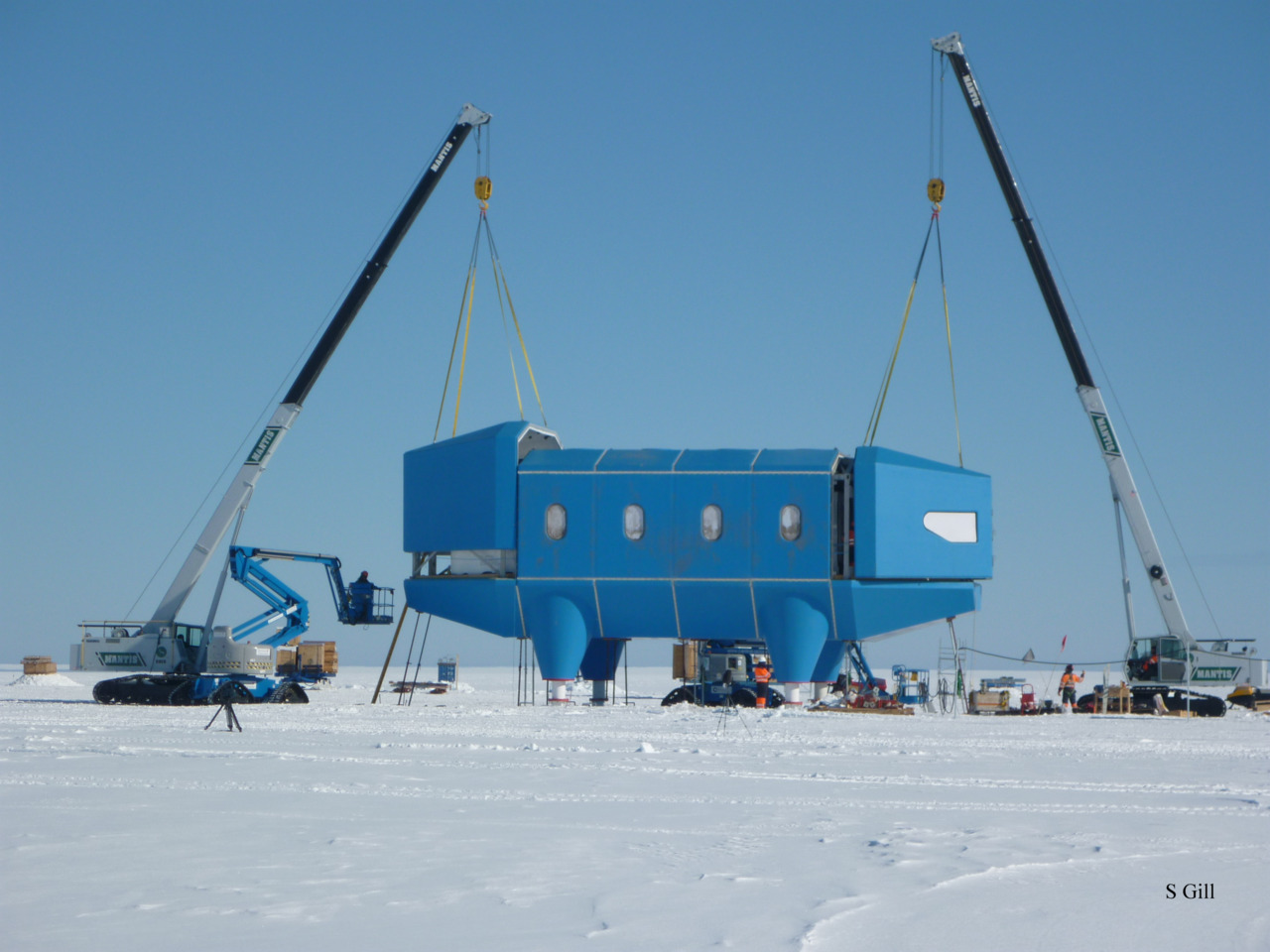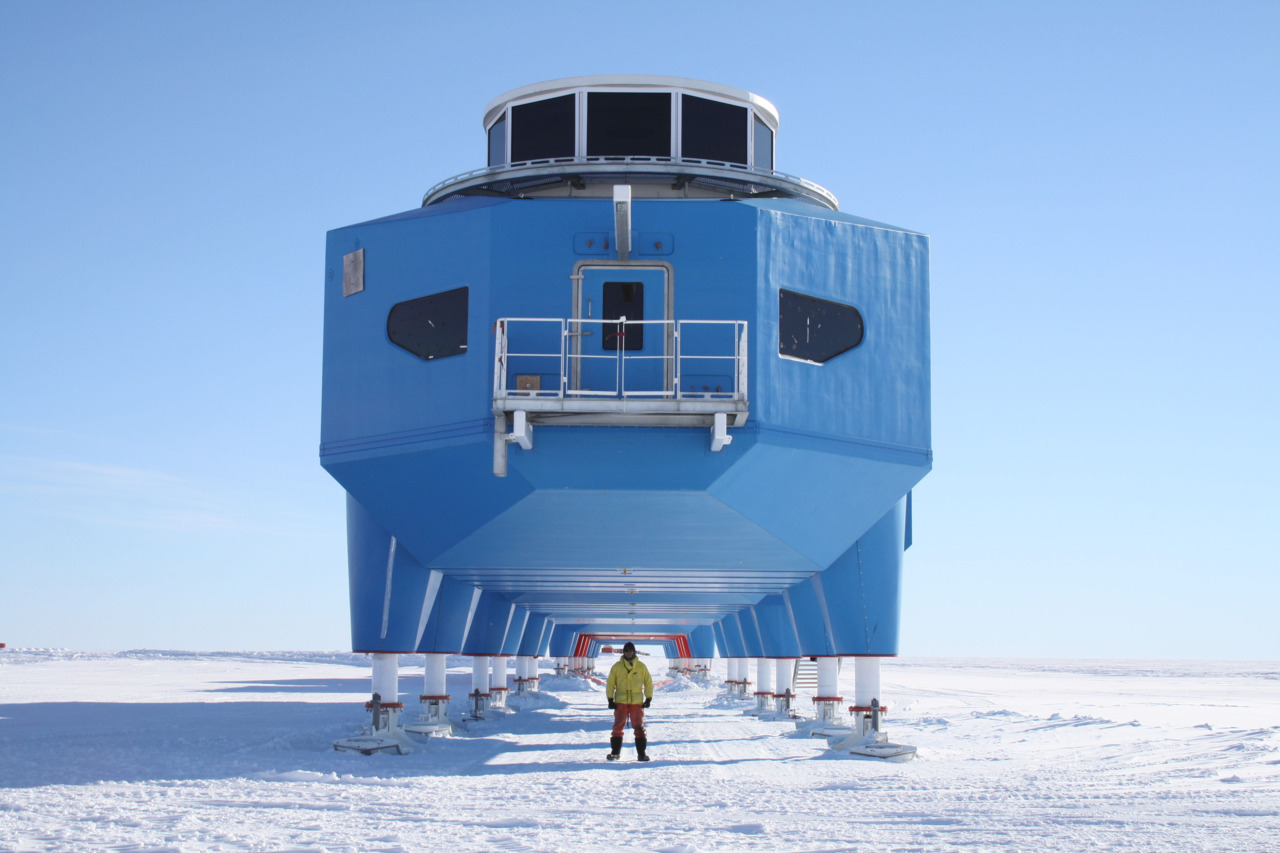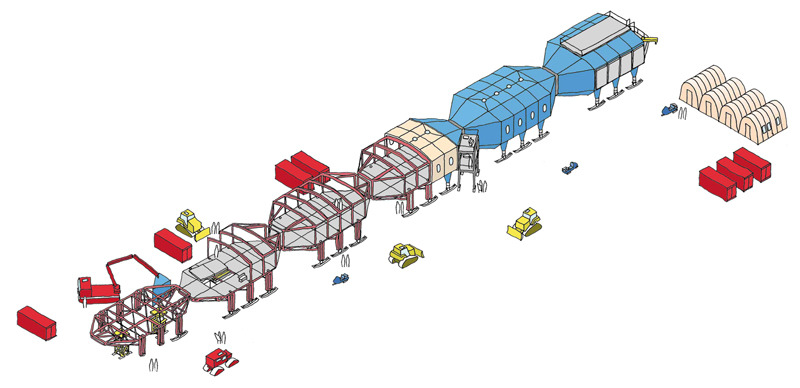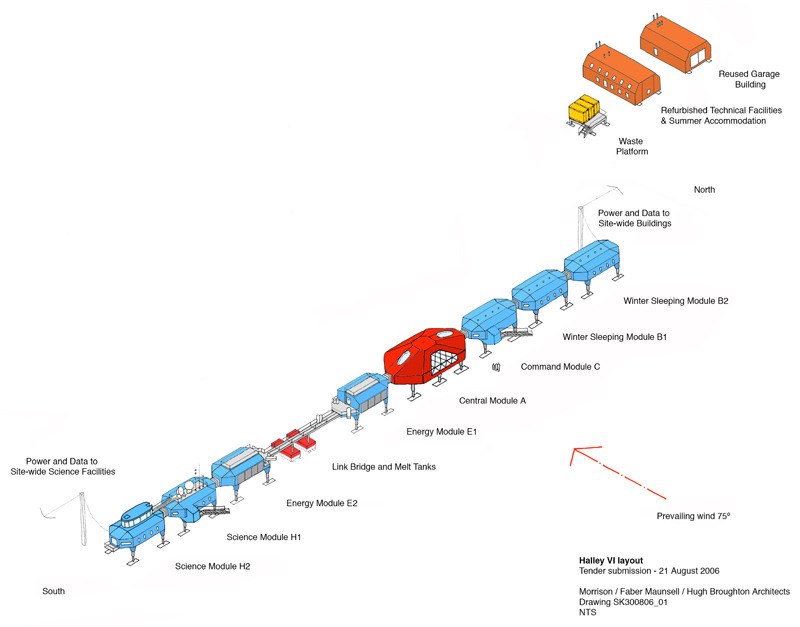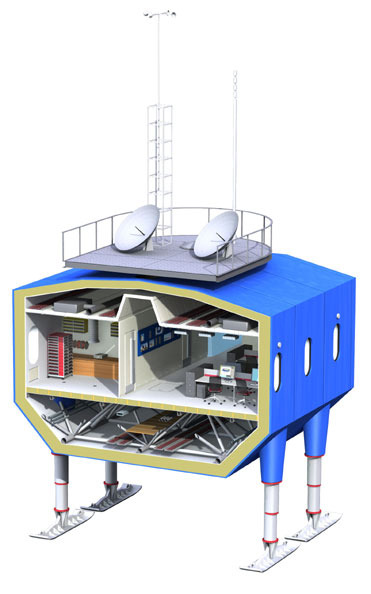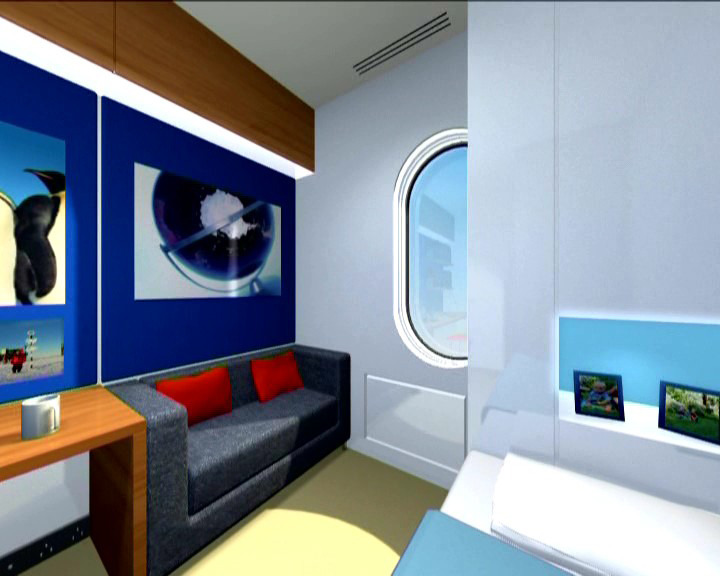S 22 |
Halley VI |
type |
|
place |
|
date |
|
architect |
The first Halley research station was built in 1956 by the British on a huge floating ice sheet, but it was rapidly buried under tons of snow. Three further Halley research stations were similarly built on the snow and suffered similar fates to the first station within a few years. The fifth station was built on legs, but after some time it had to be demolished due to the accumulated snow. The sixth Halley research station, the winner of a 2004 competition, has been designed to be transportable from one location to another as required. During the Antarctic summer (3 months) it accommodates around 70 researchers, while in winter (9 months) sixteen live there. It is located under the auroral oval, an area where the aurora australis can be often observed, as well as being close to the ozone hole making it ideal for atmospheric, geological and glaciological research.


